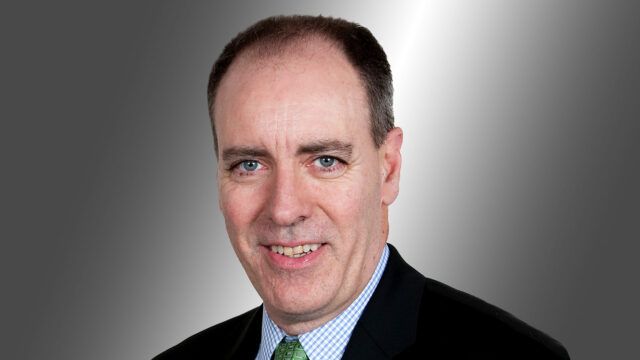As the market dials back expectations for interest rate cuts in the US, a “higher for longer interest rate” environment is proving to be a boon for the leveraged loans market.
Investors in leveraged loans, also known as senior secured loans, have benefitted from a high Fed funds rate and relatively benign default rates, so far.
Kevin Egan, a senior portfolio manager at Invesco’s Senior Secured Bank Loan Group told FSA: “[Fed chairman] Powell is helping us quite a bit because the longer coupons remain elevated, the greater the demand for the asset class.”
“If you look at loans versus the high yield bond market, which is probably the most frequently cited competitor, loan coupons today are 9.25% whereas high yield bond coupons on an index basis are about 6%.”
“So you need a lot of deterioration in loan coupons and a lot of duration rally in high yield to close the gap between the two.”
Given that senior secured loans are a floating rate asset class, investors have been wary to add risk despite the higher coupons given the expectation that interest rates are inevitably set to decline.
But Egan (pictured) argues that this large difference between loan yields and high yield bond yields means that there must be a significant number of rate cuts and soon to close the gap.
He said: “It may be counterintuitive to invest in a floating rate asset class in what may seem like a declining rate environment but even if rates fall there’s still a big gap between loan yields and high yield bond yields that would still favour the asset class.”
“That’s become only more true as rate cuts have been pushed out,” he added.
He said a lot of investors previously unwilling to take credit risk in floating rate loans now have come around to the idea that rates will be higher for longer and therefore a higher current coupon has become more attractive.
Egan said: “As a result, we’ve seen strong inflows into the asset class this year and as the rate story continues to evolve.”
Positioning is key to avoid defaults
However, given how tight spreads are and how burdensome higher rates can be for heavily indebted companies, Egan said caution is needed to avoid defaults in the market.
“In a market that is trading at 98 cents on the dollar, most of your risk is to the downside,” he warned.
As an indication of where upcoming defaults may occur, he is monitoring which loans are coming up for maturity soon and which loans are already trading at recovery levels.
“I expect default rates to go up,” he said. “Our number one objective is to try to avoid issues in the market. The default rate right now is very low running about 1.4%. By historical standards the average of the asset class is about 3.2%.”
He said the main way to outperform in the asset class is by focus on avoiding the downside risks because there isn’t much opportunity to buy discounted credits due to tight spreads.
“This is a coupon clipping market currently,” he said. “But it’s a coupon that’s very attractive at 9.25%. So you just want to protect that coupon and not have price volatility affect performance.”
Technology borrowers and healthcare borrowers look the most vulnerable to default, according to Egan, who said Invesco’s strategies are running underweights to these two sectors.
He noted that many of the loans in the technology sector were issued when valuations were considerably higher than today.
“You could bring the loan to market at the time at a 50% loan-to-value because valuations were much higher, but as valuations have fallen, the absolute leverage has remained high,” he explained.
He said that some tech companies with high leverage have seen interest expenses go up 400 basis points and therefore have experienced a significant impact to their free cash flow.
When it comes to healthcare companies, they may have stable and defensive revenues, but they also suffer from being relatively flat.
This means that in an environment where labour costs are increasing alongside interest rate costs, healthcare company margins are getting squeezed.
“Some companies in that space have been able to negotiate and cut costs, but others have not,” Egan said.

















